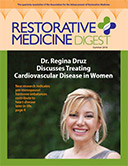The link between head trauma and the potential to develop early-onset dementia has been recognized for some time.1 Now, a recent review of the literature has demonstrated a link between head trauma and susceptibility to amyotrophic lateral sclerosis (ALS). This systematic review examined 16 studies of sports played at both professional and amateur levels. It found that increased susceptibility to ALS is significantly and independently associated with two factors: playing professionally and playing sports prone to repetitive concussive head and cervical spinal trauma. The link was additive, meaning the combination of these two factors further increased the association with ALS.2
The European EURALS consortium study, a large epidemiological study, found that experiencing more than two traumatic brain injuries (TBIs) was associated with an almost three-fold greater risk of developing ALS. Traumatic head injuries that occurred between the ages of 35 and 54 presented the highest risk.3 Studies such as these suggest that shear force in a TBI causes disruption of BBB integrity and function with bidirectional consequences: vascular injury followed by protein leakage with extravasation from brain to blood; and macromolecule leakage with cell transmigration from blood to brain.
The incidence of ALS is greater in men, but it increases in women after menopause, suggesting a possible role of sex steroids in this disorder. Serum levels of sex steroid hormones were measured in 35 patients with ALS. No differences were found between ALS patients and controls in serum levels of DHEAS, 17-β-estradiol, and total testosterone. However, serum levels of free testosterone were significantly reduced in both males and females in the ALS group. Only unbound testosterone crosses the BBB, suggesting a possible link between this sex hormone and the pathophysiology of ALS.4
Therapeutic Considerations in Neurological Disorders
A Possible Endocrine Connection
In an animal model of ALS, testosterone administration slowed the progression of atrophy and improved motor function, pointing to an anti-inflammatory effect and neuroprotective role of testosterone on disease progression.5
Modulating Autophagy
Aberrations in autophagy (the body's process of breaking down and removing cellular abnormalities) result in the accumulation of proteins that are characteristic of several neurological disorders. Lysosomes are critical to autophagy, as well as being involved in cellular signaling and energy metabolism. Evidence suggests that lysosomal failure plays a role in dysregulation of cellular aging and adult-onset of neurodegenerative conditions such as Parkinson disease, Alzheimer disease, and ALS,6,7 as well as multiple sclerosis.8
Curcumin has been shown to target a specific lysosomal pathway and is able to both induce autophagy and promote lysosomal function.9 Trehalose, a natural disaccharide with anti-neuroinflammatory effects, has been shown to counteract neurotoxicity in Parkinson's disease, by supporting autophagy and contributing to protein stabilization.10
Regulating Magnesium Homeostasis
Dysfunction in the ion channels that regulate magnesium homeostasis is found in many neurodegenerative conditions. Magnesium homeostasis is crucial for cell survival, and its dysregulation is associated with neurotoxin-mediated loss of dopaminergic neurons found in Parkinson's disease. In an experimental model, magnesium supplementation was found to decrease the activity of caspase-3 (which is associated with neuronal death), increase neuron survival, and restore mitochondrial membrane potential in a concentration-dependent manner.11 Magnesium has also been shown to attenuate post-traumatic depression and anxiety in an animal model of traumatic brain injury.12
References
- https://pubmed.ncbi.nlm.nih.gov/28269777/
- https://journals.sagepub.com/doi/full/10.1177/2192568218813916
- https://www.tandfonline.com/doi/abs/10.1080/21678421.2017.1386687
- https://www.sciencedirect.com/science/article/abs/pii/S0022510X01006888
- https://link.springer.com/article/10.1007/s12035-020-02209-5
- https://www.tandfonline.com/doi/full/10.1080/15548627.2019.1609863
- https://www.sciencedirect.com/science/article/pii/S1568163716300800
- https://www.nature.com/articles/s41573-019-0036-1
- https://www.ncbi.nlm.nih.gov/pmc/articles/PMC5342768/
- https://bpspubs.onlinelibrary.wiley.com/doi/full/10.1111/bph.14623
- https://link.springer.com/article/10.1007/s12035-019-01713-7
- https://www.tandfonline.com/doi/abs/10.1080/07315724.2004.10719396
